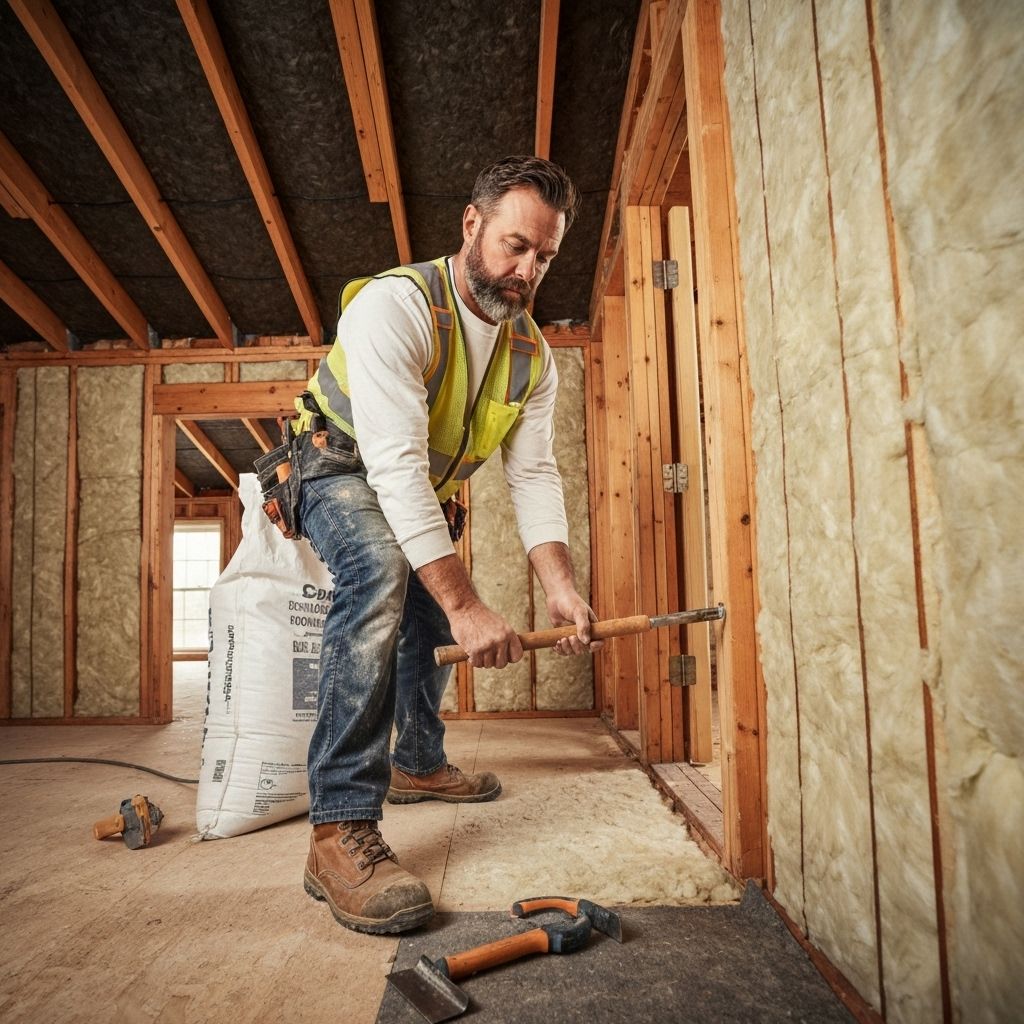Ensuring your home pleasant all year long is crucial, and one of the most effective ways to do so is through suitable insulation. Regardless of whether you are battling the brutal chill of winter or trying to fend off the sweltering of summer, insulation plays a key role in maintaining a cozy atmosphere. In this definitive guide to residential insulation, we will examine everything you need to know about assessing, enhancing, and refining your insulation to make sure your living space is always just right.
From comprehending R-values and the differences between batt and blown insulation to tackling common errors that homeowners make, this guide will deliver you with useful information and practical guidance. You will learn how to assess your property's insulation, prepare it for harsh weather conditions, and even discover the surprising advantages it brings beyond just contentment. Together, we will uncover how proper insulation can boost your home’s value, reduce your environmental impact, and help you cut money on utilities.

Grasping Residential Insulation
Home insulation acts a vital role in maintaining a pleasant living environment. It acts as a barrier against heat flow, aiding to maintain your residence toasty in the cold months and cool in the summer. Through minimizing the quantity of heat transfer, insulation increases energy efficiency, potentially reducing your heating and cooling costs significantly. Choosing the right type of insulation for your individual needs is essential to optimizing these benefits.
Various types of insulation materials are available, each with its special characteristics and applications. Common options include glass fiber, foam sheets, and foamed insulation. Knowing the pros and disadvantages of these materials will assist you take informed decisions. For example, glass fiber batt is cost-effective and simple to install, while spray foam offers superior air sealing and energy efficiency but can be more expensive. Identifying attic insulation is based on factors like your home’s design, local climate, and financial constraints.
Moreover, it is vital to consider insulation's impact on the quality of indoor air and humidity management. Good insulation not only controls temperature but also helps manage moisture levels, avoiding the growth of mold and improving overall air freshness. Being aware of how insulation works with other features in your residence will help you in establishing a healthy and comfortable living environment.
Insulation and Their Benefits
Regarding home insulation, selecting the right type greatly affects your heating and cooling and climate control efficiency. Batt-style insulation, commonly made from glass fibers, is simple to install and that fits in wall studs & the joists efficiently. Its structured form allows for excellent thermal performance for the attic & wall cavities. The key advantage of this type of insulation is its affordability and cost-effectiveness and the ability for do-it-yourself setup, making it an excellent option for people looking to enhance the energy efficiency in their homes without a large expense .
Blown-in insulation, often made from cellulose and fiberglass, is ideal for filling gaps & hard-to-reach areas. This insulation is installed using a specially designed machine which blows the insulation material through the attic and the wall spaces. The primary advantage to blown-in insulation lies in its ability to cover well and its adaptability to irregular spaces, providing even thermal protection. Additionally, it can provide excellent soundproofing benefits, which makes your home a quieter place and more comfortable.
Foam spray insulation is a widely chosen alternative, recognized for its high R-value per inch & effective air sealing properties. It expands on application, forming a seal that prevents air leaks & moisture. This insulation not only helps in keeping a stable temperature indoors but also contributes to enhanced indoor air quality by minimizing the entry of pollutants. While it typically has a higher upfront price, the long-term energy savings & value of the home often justify it worthwhile.
Thermal Setup and Care Advice
When installing insulation, always make sure you are following the manufacturer's instructions for the particular product you are using. Proper ventilation is crucial to avoid moisture buildup, which can cause mold growth and reduced effectiveness of your insulation. Make https://bestbizportal.com/read-blog/300149 to check local building codes as well to ensure compliance. If you're unsure about your DIY skills, think about engaging a specialist to guarantee a quality installation.
Upkeep is crucial to making sure your insulation remains to perform efficiently over time. Regularly inspect areas that are prone to moisture, such as lofts, basements, and basements. Look for signs of mold, pests, or signs of shifting that may have created gaps. Sealing these areas and dealing with any issues swiftly will aid preserve the integrity of your insulation and can save you money in the long run.
Finally, keep in mind that insulation technology evolves, and routine checks on your home's insulation can warn you to the need for upgrades. Consider scheduling a certified energy audit every few years to evaluate your insulation's performance and overall energy efficiency. Being proactive will not just keep your space comfortable but also add to your home's long-term value and energy savings.
